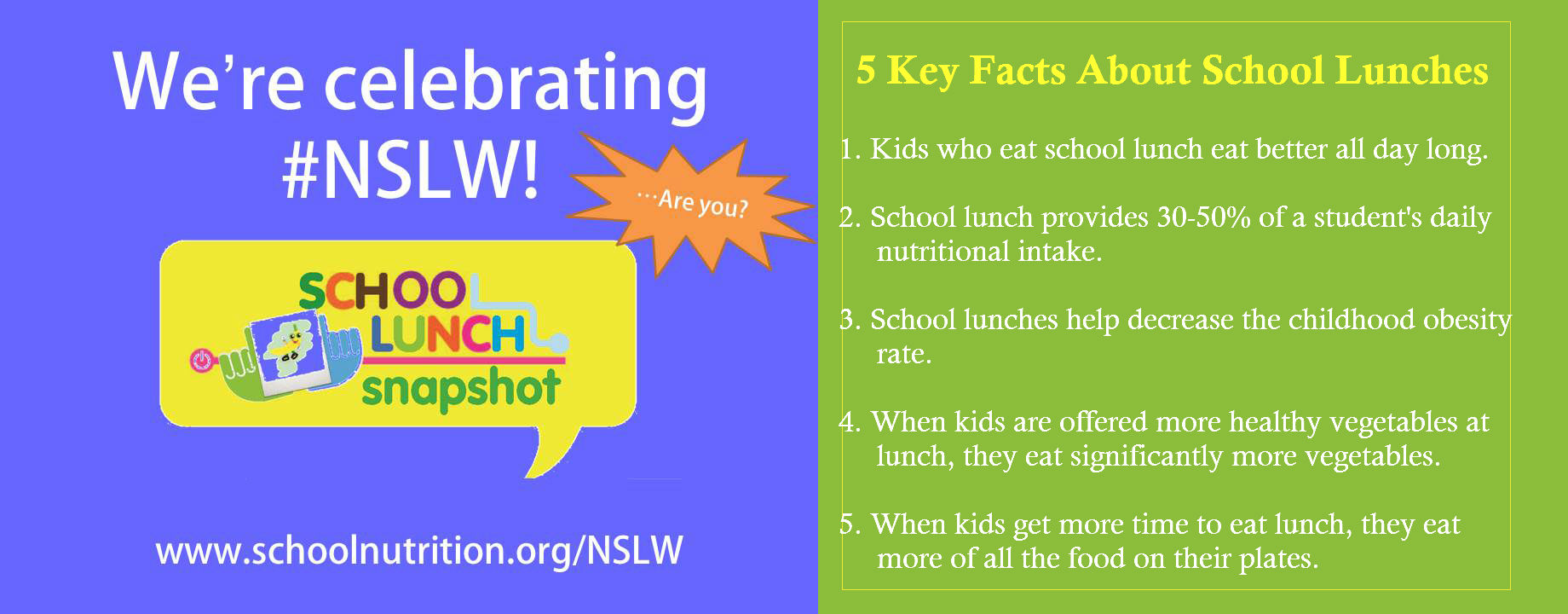 It’s National School Lunch Week, and this year, the theme is School Lunch Snapshot. The National School Lunch Program is running a school lunch photo contest, so prepare yourself for an onslaught of school lunch tray photos in your Facebook, Twitter and Instagram feeds. While you’re checking out what your kids are eating at school each day (Worcester Public School menus are here), remember that as of this year, Worcester is an “eligible community” for free school breakfast and lunch. That means that every WPS student can eat breakfast and lunch at school for free.
It’s National School Lunch Week, and this year, the theme is School Lunch Snapshot. The National School Lunch Program is running a school lunch photo contest, so prepare yourself for an onslaught of school lunch tray photos in your Facebook, Twitter and Instagram feeds. While you’re checking out what your kids are eating at school each day (Worcester Public School menus are here), remember that as of this year, Worcester is an “eligible community” for free school breakfast and lunch. That means that every WPS student can eat breakfast and lunch at school for free.
Providing free school lunch for all children has a number of big benefits. Here are five key facts you may or may not know about school lunches and why school lunches are important.
Five Key Facts About School Lunches
- Kids who eat a healthy lunch at school have a higher nutrient intake not just at lunch but for the entire day. This has been borne out in multiple studies. A healthy school lunch provides benefits for the entire day, not just during school hours. Studies have also found that kids who eat school lunch are far less likely to fill up on high-sugar, high-fat snacks over the course of the rest of the day. That just makes logical sense, right?
A 2014 study compared the food eaten by students who at National School Lunch Program meals with lunches brought from home. They found that kids who at school lunch ate significantly more protein, calcium, iron, cholesterol, sodium, vitamin A and vitamin C than those who ate lunches brought from home.
- The Healthy, Hunger-Free Kids Act 2010 established new nutritional standards for school lunches. Under the new standards, school lunches must provide one-third of a child’s daily recommended intake for protein, vitamins A and C, iron and calcium, while limiting overall fat to 30% or less, and saturated fat to 10% or less of the calories over the course of a week. This can be especially important for kids from low-income and food-insecure families – that’s close to 17% of Worcester schoolkids – who often eat as much as half their daily intake of calories at lunch.
- Providing a healthy school lunch helps decrease childhood obesity rates. A 2015 study released data collected over a 3-year period. They found that 4th and 5th-grade students eligible for free and reduced price meals at three more servings a week than those who didn’t eat school lunch. Those benefits held up over time. By eight grade, the same children were still eating more fruits and vegetables than those who didn’t eat school lunches. Eating more fruits, vegetables and legumes is positively associated with lower childhood obesity rates.
A 2011 study of nearly 2,700 NSLP children found that the NSLP reduces the prevalence of food insecurity by 3.8 percent, poor general health by 29 percent, and the rate of obesity by at least 17 percent in its participants.
- Kids who are offered more healthy vegetables at school lunch increase their consumption of vegetables significantly. As part of the research for improved nutritional standards, the U.S.D.A. collected data on the foods that kids ate when offered different types of meals, using actual lunch menu records. The research found that when kids were offered school lunches that meet the new nutritional standards, which went into effect in 2012, they increased their intake of vegetables overall. The research also found that students in schools that only offered healthy a la carte alternatives – or no a la carte alternatives – had higher intakes of dark green vegetables and legumes.
- Providing kids with more time to eat lunch is one of the most effective ways to increase all the benefits of eating a healthy lunch at school. A 2012 study found that children with fewer than 20 minutes to eat lunch consumed 13 percent less of their entrees, 10 percent less of their milk, and 12 percent less of their veggies compared to students who had at least 25 minutes. Adding just 10 minutes to school lunch period can significantly increase the amount of healthy food that kids consume.
